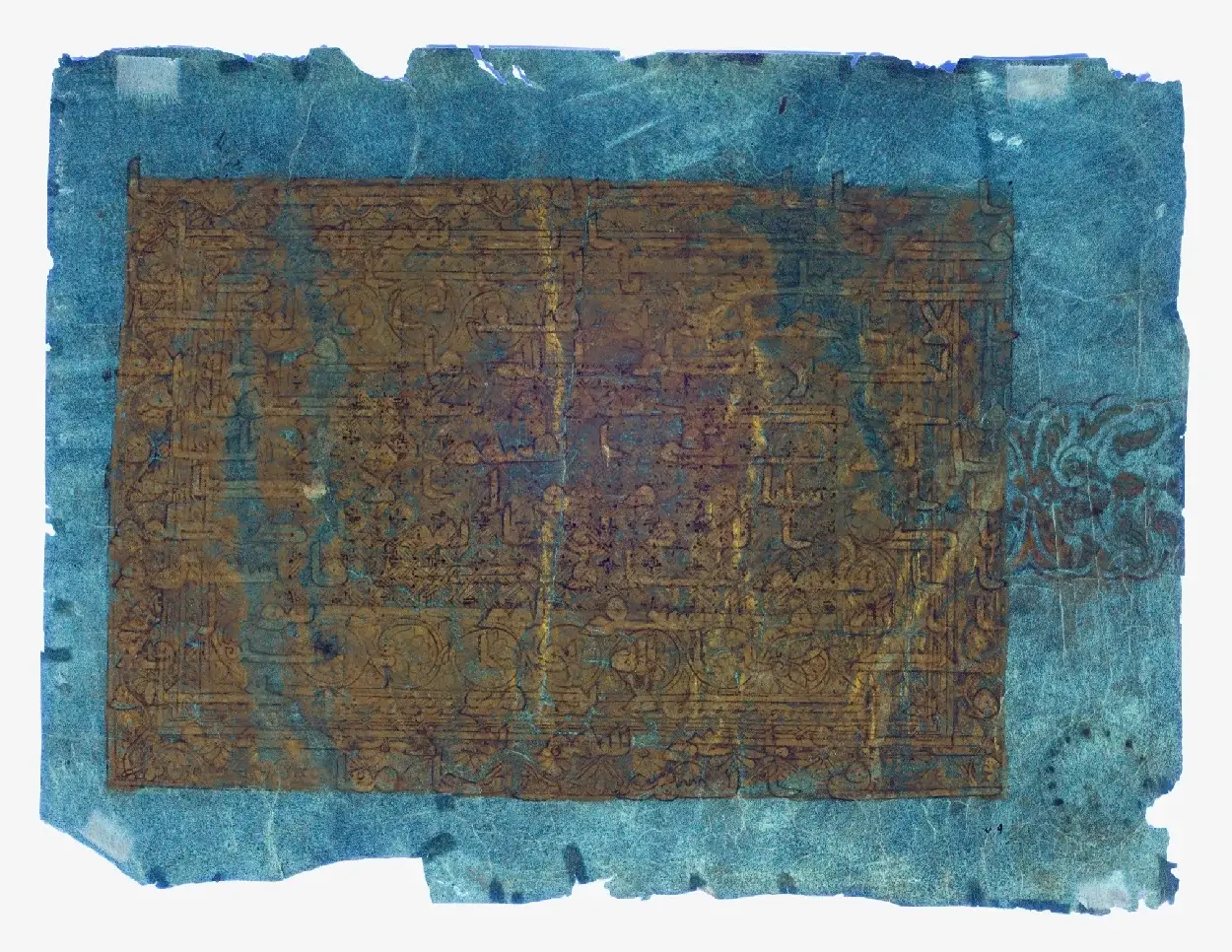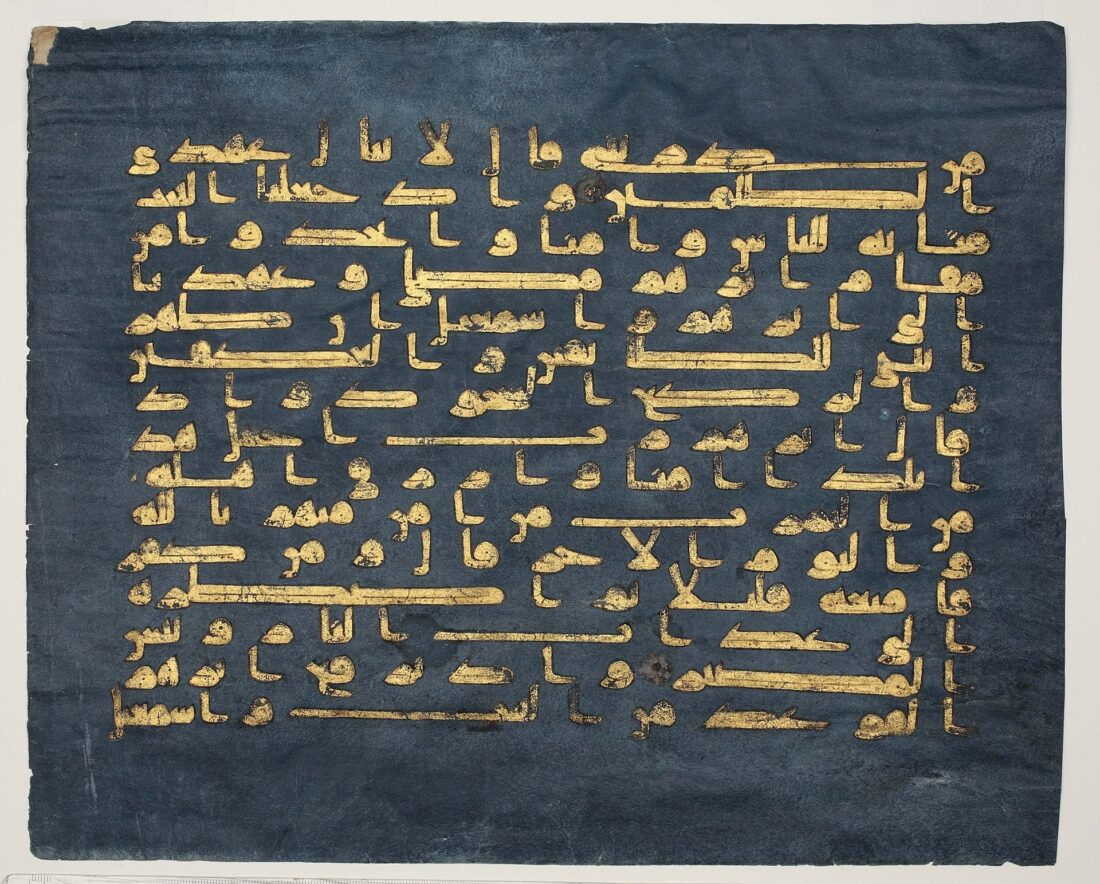Secrets of Blue Quran: How errors were concealed in ancient manuscript
 Blue Qur'an, Zayed National Museum, UAE, Nov. 2024. (Photo via Zayed National Museum)
Blue Qur'an, Zayed National Museum, UAE, Nov. 2024. (Photo via Zayed National Museum)
Experts at the Zayed National Museum in the United Arab Emirates (UAE) have made an unexpected discovery in the Blue Quran, one of the most significant Islamic manuscripts.
Through the use of advanced imaging technology, the museum uncovered corrections made to calligraphy errors within the manuscript, offering a rare glimpse into the meticulous work of early Islamic scribes.

Calligraphy errors and corrections unveiled using multispectral imaging
The discovery revealed that beneath a decorative leaf illustration, an error in the writing of verses from Surah An-Nisa was covered up by the original scribe. This correction, hidden beneath the artistic embellishment, was only visible through multispectral imaging, a technique that allows scholars to reveal previously invisible or faded texts.
According to museum officials, this type of correction is exceptionally rare in Islamic manuscripts from the period, providing valuable insight into the practices of early scribes.
Manuscript from 9th century
The Blue Quran is believed to have been created during the late ninth or early 10th century, likely for the Muslim community of Kairouan located in modern-day Tunisia. The manuscript, known for its blue ink and luxurious gold and silver calligraphy on sheep parchment, contains around 600 pages. Of these, only 100 pages are known to exist, with five pages held at the Zayed National Museum, making it a highly prized artifact.


Blue Quran to be displayed in new gallery
The page with the newly discovered corrections will be featured in the upcoming Through Our Connections Gallery at the Zayed National Museum. The exhibit is set to offer a closer look at the artistry and scholarly significance of this rare 9th-century manuscript.
New perspective on Islamic calligraphy
The Blue Quran has long intrigued scholars since its first discovery in the early 20th century. However, it wasn’t until the 1970s, when some pages were displayed at the Islamic Arts exhibition in London’s Hayward Gallery, that it began to capture widespread attention.
The latest findings shed new light on the development of Islamic calligraphy, offering a fresh perspective on the artistic and academic values of early Islamic manuscripts.



